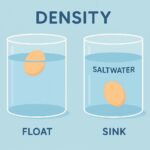The greenhouse effect is one of the most critical processes shaping our planet’s climate. It is the natural mechanism by which certain gases in the Earth’s atmosphere trap heat from the sun, keeping our planet warm enough to sustain life. However, human activities have intensified this effect, leading to global warming and climate change. To better understand the dynamics of the greenhouse effect and its implications, scientists have turned to a unique approach: creating miniaturized versions of greenhouses to study the process in controlled environments. This blog post explores the concept of the mini greenhouse effect, its role in climate research, and the insights it provides into our changing world.
Understanding the Greenhouse Effect
Before diving into the mini greenhouse effect, it’s essential to grasp the basic principles of the greenhouse effect itself. In simple terms, the greenhouse effect occurs when greenhouse gases like carbon dioxide, methane, and water vapor trap heat from the sun in the Earth’s atmosphere. This natural process is crucial for maintaining a habitable climate, as without it, the Earth’s average temperature would be around -18°C, making life as we know it impossible.
However, since the Industrial Revolution, human activities such as burning fossil fuels, deforestation, and industrial agriculture have significantly increased the concentration of greenhouse gases in the atmosphere. This intensification of the greenhouse effect has led to what is now commonly referred to as global warming. The consequences include rising temperatures, more extreme weather events, and disruptions to ecosystems and biodiversity.
The Concept of a Mini Greenhouse
While the greenhouse effect operates on a global scale, researchers have developed smaller-scale models to study this phenomenon in greater detail. A mini greenhouse is essentially a scaled-down version of a greenhouse, designed to replicate the conditions under which the greenhouse effect occurs. These mini greenhouses can range in size from small, portable enclosures to larger structures that mimic the conditions of full-sized greenhouses.
The primary purpose of a mini greenhouse is to create a controlled environment where scientists can study the interaction between greenhouse gases, temperature, and plant life. By manipulating variables such as gas composition, temperature, and humidity, researchers can gain valuable insights into how the greenhouse effect works and how it might change in response to different scenarios.
Studying the Greenhouse Effect in Miniature
Studying the greenhouse effect in a miniaturized setting offers several advantages over attempting to study it on a global scale. For one, it allows researchers to maintain precise control over experimental conditions, which is crucial for conducting scientific experiments. Additionally, mini greenhouses are cost-effective and require fewer resources than larger-scale studies, making them an accessible option for researchers with limited budgets.
One of the most significant benefits of studying the greenhouse effect in a mini greenhouse is the ability to isolate specific variables. For example, scientists can study the impact of a single greenhouse gas, such as carbon dioxide, on temperature and plant growth without being influenced by other factors. This level of isolation is nearly impossible to achieve in real-world conditions, where multiple variables interact in complex ways.
Moreover, mini greenhouses provide researchers with the opportunity to explore the effects of the greenhouse effect over different timescales. While global climate models rely on long-term projections, mini greenhouses can simulate these conditions in a shorter amount of time, allowing scientists to observe and analyze the effects of greenhouse gas emissions more quickly.
How Are Mini Greenhouses Constructed?
Constructing a mini greenhouse requires careful planning and attention to detail. The structure must be designed to mimic the conditions of a full-sized greenhouse while being small enough to be practical for research purposes. The materials used in construction are typically transparent or translucent to allow sunlight to pass through, just like in a traditional greenhouse. Common materials include glass, plastic, or polycarbonate, each with its own advantages and disadvantages.
The size of a mini greenhouse can vary depending on the specific research goals. Some mini greenhouses are small enough to fit on a tabletop, while others may be several meters in length and width. Regardless of size, the fundamental principle remains the same: to create a sealed environment where the greenhouse effect can be studied and measured.
Inside the mini greenhouse, researchers typically place sensors and monitoring equipment to track various parameters such as temperature, humidity, carbon dioxide levels, and light intensity. These measurements provide valuable data that can be used to analyze the effects of the greenhouse effect under different conditions.
In addition to the physical structure, mini greenhouses often incorporate advanced technologies such as automated systems for controlling temperature and gas composition. These systems enable researchers to simulate different climate scenarios, such as the projected levels of greenhouse gases in the future, and observe how these changes might impact the environment.
The Challenges of Replicating the Greenhouse Effect
While mini greenhouses offer many advantages for studying the greenhouse effect, there are also challenges associated with replicating this complex process in a scaled-down environment. One of the primary challenges is ensuring that the conditions within the mini greenhouse accurately represent those found in the real world.
For instance, in a natural setting, the greenhouse effect involves the interaction of numerous factors, including atmospheric circulation, ocean currents, and vegetation. Replicating these interactions in a mini greenhouse is extremely difficult, if not impossible, due to the complexity and interconnectedness of these systems. As a result, researchers must often make simplifications or focus on specific aspects of the greenhouse effect that can be more easily isolated and studied.
Another challenge is the potential for variability in experimental conditions. Even in a controlled environment like a mini greenhouse, there can be unexpected fluctuations in temperature, humidity, or other variables that may impact the results of the study. To mitigate this, researchers must carefully calibrate their equipment and closely monitor the conditions within the mini greenhouse throughout the course of the experiment.
Finally, there is the issue of scaling up the results from a mini greenhouse to make broader conclusions about the greenhouse effect on a global scale. While mini greenhouses are valuable tools for conducting controlled experiments, the findings may not always translate directly to real-world conditions. Researchers must therefore be cautious when interpreting the results and consider the limitations of their model when drawing conclusions.
Real-World Applications of Mini Greenhouse Research
Despite the challenges, research conducted in mini greenhouses has led to numerous breakthroughs in our understanding of the greenhouse effect and its implications for the environment. These insights have far-reaching applications in various fields, from agriculture to urban planning.
One of the most significant applications of mini greenhouse research is in the field of agriculture. By studying how different levels of greenhouse gases affect plant growth and health, scientists can develop strategies to improve crop yields and resilience in the face of climate change. This knowledge is particularly valuable in regions where food security is a pressing concern.
Mini greenhouses have also played a crucial role in the development of urban agriculture. As cities grow and expand, there is an increasing need for sustainable ways to produce food in urban environments. Mini greenhouses provide a practical solution, allowing residents to grow their own fruits and vegetables even in areas with limited space. This not only promotes food security but also helps to reduce the carbon footprint associated with transporting food from rural areas to urban centers.
In addition to its applications in agriculture, mini greenhouse research has contributed to the development of new technologies aimed at mitigating the effects of climate change. For example, scientists have used mini greenhouses to test the effectiveness of various materials and designs for passive solar greenhouses, which can be used to grow plants in colder climates without the need for additional heating.
Furthermore, the insights gained from mini greenhouse research have informed policy decisions related to climate change. By providing a better understanding of how greenhouse gases influence the environment, this research has helped policymakers develop more effective strategies for reducing emissions and promoting sustainability.
Why Mini Greenhouses Matter for Climate Change
The study of the greenhouse effect in mini greenhouses is not just an academic exercise; it has real-world significance in the context of climate change. As the Earth’s climate continues to warm due to human activities, it is more important than ever to understand the mechanisms driving this change and how they can be mitigated.
Mini greenhouses offer a unique opportunity to study the greenhouse effect in a controlled and scalable way. By manipulating the conditions within these miniaturized environments, researchers can gain valuable insights into the complex interactions that drive global warming. This knowledge can then be used to develop more effective strategies for reducing greenhouse gas emissions and adapting to the impacts of climate change.
Moreover, the use of mini greenhouses in research and education helps to raise awareness about the importance of climate action. By providing a tangible and accessible model of the greenhouse effect, mini greenhouses can serve as a powerful tool for teaching students, policymakers, and the general public about the urgent need to address climate change.
Future Directions in Greenhouse Effect Research
As our understanding of the greenhouse effect continues to evolve, so too will the role of mini greenhouses in climate research. Future studies may focus on exploring new methods for reducing greenhouse gas emissions, improving the efficiency of greenhouse models, and developing innovative technologies for mitigating the impacts of climate change.
One promising area of research involves the use of mini greenhouses to study the potential of carbon capture and storage technologies. By simulating the conditions under which these technologies operate, scientists can assess their effectiveness in reducing greenhouse gas levels and identify areas for improvement.
Another potential direction for future research is the integration of mini greenhouses with other climate models and technologies. For example, mini greenhouses could be used in conjunction with computer simulations to create more accurate and comprehensive models of the Earth’s climate system. This approach would allow researchers to explore the interactions between different components of the climate system in greater detail.
Finally, the development of more advanced materials and designs for mini greenhouses could further enhance their utility in climate research. For instance, materials that are more durable, transparent, or insulating could improve the accuracy and longevity of greenhouse effect studies, while new designs could offer greater flexibility in terms of the conditions that can be simulated.
Conclusion
In conclusion, the mini greenhouse effect offers a unique and valuable approach to studying the complex processes that drive our planet’s climate. By creating scaled-down models of greenhouses, researchers can gain insights into the dynamics of the greenhouse effect and its implications for a warming world.
From improving agricultural practices to developing new technologies for mitigating climate change, the applications of mini greenhouse research are both diverse and impactful. As the world continues to grapple with the challenges posed by global warming, the knowledge gained from these studies will play an increasingly important role in shaping our response to this pressing issue.
Ultimately, the study of the mini greenhouse effect reminds us of the importance of innovation and scientific inquiry in addressing the challenges of our time. By harnessing the power of Mini Greenhouse Effect: Trapping Heat to Study Climate technology and creativity, we can work towards a more sustainable future for generations to come.



